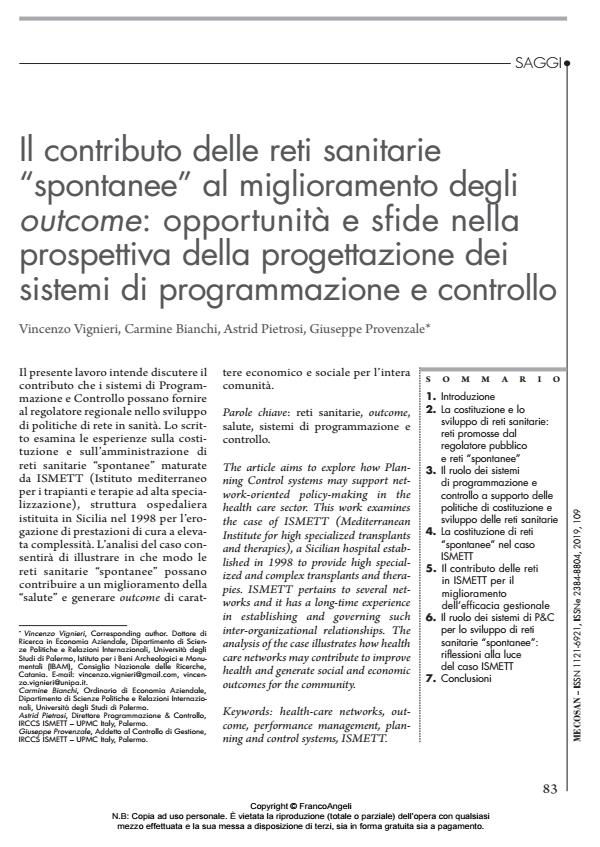Il contributo delle reti sanitarie "spontanee" al miglioramento degli outcome: opportunità e sfide nella prospettiva della progettazione dei sistemi di programmazione e controllo
Titolo Rivista MECOSAN
Autori/Curatori Vincenzo Vignieri, Carmine Bianchi, Astrid Pietrosi, Giuseppe Provenzale
Anno di pubblicazione 2020 Fascicolo 2019/109
Lingua Italiano Numero pagine 22 P. 83-104 Dimensione file 591 KB
DOI 10.3280/MESA2019-109005
Il DOI è il codice a barre della proprietà intellettuale: per saperne di più
clicca qui
Qui sotto puoi vedere in anteprima la prima pagina di questo articolo.
Se questo articolo ti interessa, lo puoi acquistare (e scaricare in formato pdf) seguendo le facili indicazioni per acquistare il download credit. Acquista Download Credits per scaricare questo Articolo in formato PDF

FrancoAngeli è membro della Publishers International Linking Association, Inc (PILA)associazione indipendente e non profit per facilitare (attraverso i servizi tecnologici implementati da CrossRef.org) l’accesso degli studiosi ai contenuti digitali nelle pubblicazioni professionali e scientifiche
Il presente lavoro intende discutere il contributo che i sistemi di Programmazione e Controllo possano fornire al regolatore regionale nello sviluppo di politiche di rete in sanita. Lo scritto esamina le esperienze sulla costituzione e sull’amministrazione di reti sanitarie "spontanee" maturate da ISMETT (Istituto mediterraneo per i trapianti e terapie ad alta specializzazione), struttura ospedaliera istituita in Sicilia nel 1998 per l’erogazione di prestazioni di cura a elevata complessita. L’analisi del caso consentira di illustrare in che modo le reti sanitarie "spontanee" possano contribuire a un miglioramento della "salute" e generare outcome di carattere economico e sociale per l’intera comunita.
Parole chiave:Reti sanitarie, outcome, salute, sistemi di programmazione e controllo.
- Enhancing Performance Regimes to Enable Outcome-based Policy Analysis in Cross-boundary Settings Vincenzo Vignieri, pp.3 (ISBN:978-3-031-07073-0)
Vincenzo Vignieri, Carmine Bianchi, Astrid Pietrosi, Giuseppe Provenzale, Il contributo delle reti sanitarie "spontanee" al miglioramento degli outcome: opportunità e sfide nella prospettiva della progettazione dei sistemi di programmazione e controllo in "MECOSAN" 109/2019, pp 83-104, DOI: 10.3280/MESA2019-109005